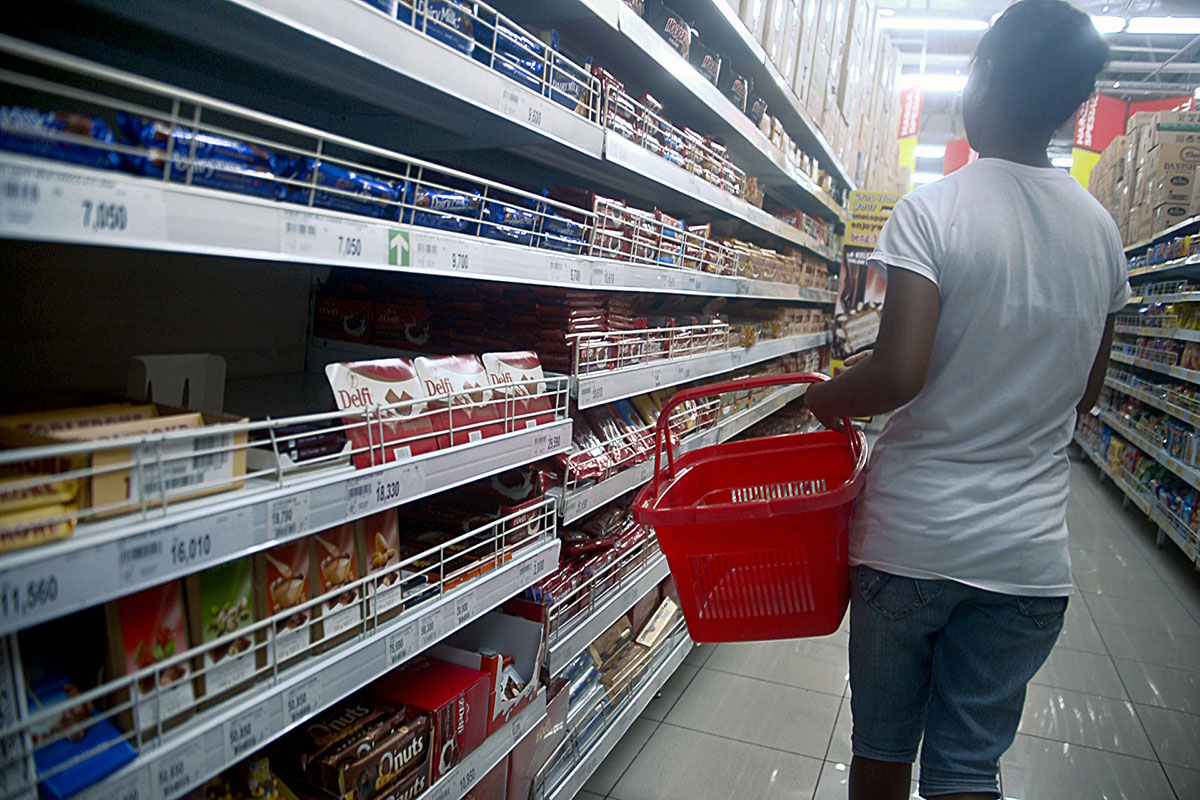In a country long renowned for its cocoa beans, it’s a little ironic that until recently, Indonesia’s inhabitants haven’t had much of a taste for chocolate.
The average Indonesian eats just 300 grams of chocolate annually, a sliver of the nine pounds or so put away by the average American, according to Euromonitor. But as incomes rise, tastes are slowly changing and global industry giants are positioning themselves to take full advantage of the sugar rush to come. At the same time, the country’s cocoa industry is slipping.
While Indonesians tend to indulge their sweet tooth with traditional treats like fried bananas and flavored sticky rice, Asia’s demand for chocolate is forecast to grow at nearly twice the global pace, according to market surveys. To serve that growing appetite, Zurich-based Barry Callebaut AG opened its first chocolate factory in Indonesia last year. U.S. rival Cargill Inc. opened a $100 million cocoa processing facility in East Java, its first in Asia, three years ago. And in 2011, Tulip Chocolate — whose products sell to businesses in Asia and the Middle East — opened its Chocolate School.
“We felt it was in our interests to help people understand the full potential and opportunities of creating quality chocolate products,” William Chuang, chief executive officer of Tulip owner PT Freyabadi Indotama, wrote in an email. Freyabadi is a privately-held partnership between Fuji Oil Holdings Inc., the world’s largest producer of edible fats, and McKeeson Investment Pte Ltd., an arm of Singapore-listed Delfi Ltd., a regional confectionary business.
Most locally made commercial chocolate uses “compound,” in which vegetable fat substitutes for the cocoa butter found in higher-quality “couverture.” Compound is a lot cheaper and resists the tropical heat better, but has a waxier taste. Tulip sells both kinds, but its Chocolate School is attempting to raise the bar.
On the third floor of a Jakarta shopping arcade, students carefully work molten chocolate on a marble counter to achieve the right temperature and crystal structure. They fill plastic molds then leave the bars to cool as they move on to other things: blending a passion-fruit ganache, hand-painting and filling trays of pralines, lunch.
Finally, the moment of truth, as a freshly-minted bar is popped out of its mold. Its lustrous shine shows the chocolate is well-tempered and the texture will be smooth.
But chef Nanang Priatna, leaning in for closer inspection, points to a couple of tiny gaps in the edges between the bar’s segments. That means trapped air bubbles, despite the best efforts of the novice chocolatier.
“It’s OK, it’s not bad,” Mr. Nanang says charitably. “It’s a first try.”
Mr. Nanang — who honed his skills at some of Jakarta’s top hotels and in the chocolate capital of Brussels — is a fervent evangelist for the “food of the gods.” About 2,000 students from around Asia have taken the Chocolate School’s classes in Indonesian and English, where tools ranging from toothpicks to spray-paint guns are deployed to form and decorate bars, pralines, hollow figurines and more.
Legend has it two Spanish ships brought cocoa beans to Indonesia from the New World in the mid-16th century. By 1720, the Dutch had established cocoa plantations around what is now Jakarta.
The sector boomed after World War II but production has been declining lately in part due to aging trees, disease, flooding and the like. Many small farmers, who dominate production here, have switched to commodities such as palm oil and rubber, which are easier to grow and potentially more lucrative.
Despite the government’s revitalization efforts, the cocoa industry today is running at only 49 percent capacity, generating about $1.4 billion, according to data from the Ministry of Industry.
As in colonial days, most of the beans are shipped abroad.
“Traditionally, this has been a place where things are grown and exported but not consumed,” said Albert Taylor, an Australian who recently graduated from the Chocolate School, along with his wife and daughter. They produce premium coffee from a plantation in north Sumatra and are considering making their own chocolate too, targeted mainly at international travelers passing through duty-free shops.
Most of the school’s students have been entrepreneurs looking to “get in on the chocolate boom,” said principal Mervyn Pereira. Not all have been successful. “We warn them that just because you take a few courses in the Chocolate School doesn’t mean they are ready to open their own business.”
Celcys Leman, a 26-year-old hospitality school graduate, is starting an online bakery from her home. “Cake is my passion,” Leman said. She took the two-day, 3.25 million rupiah ($240) chocolatier course to learn garnishing and decorating skills.
“You can’t go wrong with chocolate,” she says.
The Chocolate School has offered marketing lectures, but focuses more on proselytizing than profit.
“The school is not self-sustaining. It was never meant to be,” said Mr. Chuang. “However as the interest in chocolate grows … we hope the school will be able to stand on its own feet.” – Bloomberg
Recommended stories:
